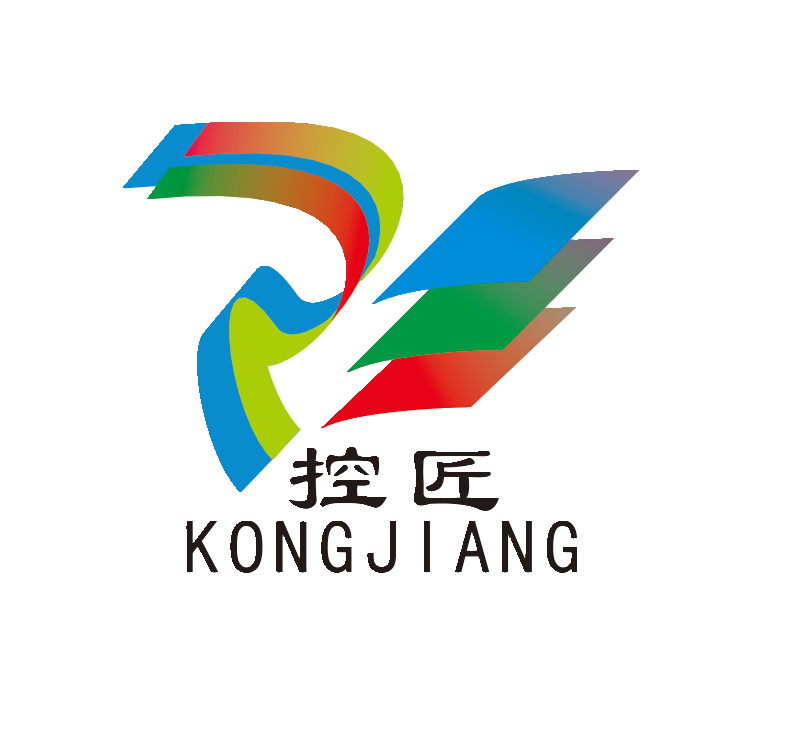

K-WANG


Yokogawa SL1000 high-speed data acquisition unit input module
Yokogawa SL1000 high-speed data acquisition unit input module
Positioning and Applicable Scope
Product association: The manual for the dedicated input module of the Yokogawa SL1000 high-speed data acquisition unit provides detailed specifications, measurement principles, and operating points for 15 core input modules. It needs to be used in conjunction with other manuals of the SL1000 system.
Supporting document system: The SL1000 series documents include categories such as system operation, collection software, module security, and auxiliary software installation. The functions of each document are clearly divided, and "E" is the language code. The latest version can be obtained through the Yokogawa official website.
Classification and specification summary of core input modules
The SL1000 input module can be divided into six categories based on measurement functions: voltage/high-speed voltage, high voltage, temperature/universal, strain, acceleration/frequency, and high-speed/high-frequency. Each module is designed for different application scenarios, with significant differences in key parameters. The following are the highlights of the core module specifications:
1. High speed voltage module (core used for high-frequency signal acquisition)
Module model, core parameters, applicable scenarios
701250 (10 MS/s, 12 bits, isolated) 2-channel, DC-3 MHz bandwidth, ± 50 mV~200 V range, 2300 Vrms withstand voltage industrial high-frequency voltage signals (such as motor drive signals)
720210/721211 (100 MS/s, 12 bits, isolated) 2-channel, DC-20 MHz bandwidth, maximum 1000 V (DC+ACpeak) input, 5400 Vrms withstand ultra-high frequency signals (such as RF and pulse signals), supports simultaneous installation of 4 modules (top slot)
701251 (1 MS/s, 16 bits, isolated) 2-channel, DC-300 kHz bandwidth, ± 1 mV~20 V high-precision range, residual noise ± 100 μ V high-precision low-frequency voltage measurement (such as sensor weak signal)
2. High voltage modules (designed for high voltage environments)
Module model, core parameters, and functional highlights
701267 (100 kS/s, 16 bits, isolated, with RMS) 2-channel, ± 200 mV~2 kV range, RMS measurement mode (40 Hz-10 kHz), 3510 Vrms high-voltage effective value measurement (such as grid voltage monitoring), supports waveform/RMS dual-mode switching
720268 (1 MS/s, 16 bits, isolated, with AAF/RMS) 2-channel, DC-300 kHz bandwidth, automatic anti aliasing filtering (AAF), 5400 Vrms high-voltage high-frequency signal acquisition, AAF automatically adjusts the cutoff frequency according to the sampling rate (e.g. AAF=40 kHz at 100 kS/s)
3. Temperature/Universal Module (Multi parameter Comprehensive Measurement)
Module model, core parameter measurement capability
701261/701262 (universal voltage/temperature) 2-channel, supports 8 types of thermocouples such as K/E/J/T, ± 50 mV~200 V voltage, 120 dB common mode rejection ratio voltage and temperature mixed measurement, 701262 with AAF filter, suitable for multi parameter industrial environment
701265 (high-precision voltage temperature, isolation) 2-channel, temperature accuracy ± (0.1% reading+1.5 ℃), voltage accuracy ± (0.08% range+2 μ V), 20 nA input bias current laboratory level high-precision measurement (such as precision equipment temperature monitoring)
720266 (low noise, high-precision voltage and temperature) 2-channel, residual noise ± 4 μ V, DC-15 Hz bandwidth, 0.1 Hz~8 Hz optional digital filtering for ultra-low noise scenarios (such as weak temperature and voltage signals from sensors)
4. Strain type module (specialized for structural stress measurement)
Module Model Core Parameter Interface and Calibration
701270 (NDK interface) 2-channel, 100 kS/s sampling rate, ± 20000 μ STR range, 120-1000 Ω strain gauge resistance in accordance with Japanese NDK standards, equipped with a dedicated NDK connector (PRC03-12A10-7M10.5)
701271 (DSUB interface, with shunt calibration) 2-channel, built-in shunt calibration relay, ± 20000 μ STR range, supports mV/V unit system with 9-pin D-Sub interface, supports shunt calibration (Shun Cal), suitable for structural mechanics testing
5. Frequency/acceleration module (dynamic signal measurement)
Module model core parameter measurement function
701281/720281 (frequency module) 2-channel, 0.01 Hz~500 kHz measurement range, 625 ps resolution, supports 8 modes including frequency/RPM/cycle/duty cycle, etc. 720281 supports 1000 Vrms (CAT II) input, suitable for motor speed and pulse signal monitoring
701275 (Acceleration/Voltage Module, with AAF) 2-channel, DC-40 kHz bandwidth, supports built-in amplifier acceleration sensors such as ICP/ISOTRON, 4 mA sensor power supply for mixed measurement of acceleration and voltage, AAF automatically adapts sampling rate (e.g. AAF=4 kHz at 10 kS/s)
6. Other special modules
701255 (non isolated high-speed voltage module): 2-channel, 10 MS/s sampling rate, non isolated design, suitable for low-cost high-frequency measurement without isolation requirements (such as circuit board signal testing).
701280 (Appendix Frequency Module): Measurement range of 0.01 Hz~200 kHz, 50 ns resolution, supports pulse integration and velocity calculation, suitable for low-end dynamic signal monitoring.

Key measurement principles and operational points
1. Core technology of strain measurement
Basic formula: Strain value ε=Δ L/L (Δ L is the length change, L is the initial length); The resistance change of strain gauges is proportional to the strain, that is, Δ R/R=K × ε (K is the sensitivity coefficient, usually K=2.0).
Shunt Cal: The 701271 module has a built-in calibration relay that simulates strain by paralleling a known resistor (shunt resistor Rs). The calculation formula is Rs=R × (1-K × ε/2)/(K × ε) (R is the bridge resistance), and it needs to be paired with a bridge that supports shunt calibration (such as 701957/701958). After calibration, the gain error can be controlled within ± 0.5%.
2. Measurement principle of frequency module
Measurement resolution: Based on 625 ps, measurement is achieved by counting the input signal period, such as frequency=1/(counting times x 625 ps), and 16 bit data output (24000 LSB/range).
Filtering and anti-interference: Supports bandwidth limitation from 100 Hz to 100 kHz, with hysteresis function in the range of ± 1% to ± 5%, which can eliminate jitter during contact on/off (adjustable jitter reduction time from 1 to 1000 ms); Low frequency attenuation point ≤ 0.5 Hz during AC coupling, suitable for power frequency (50/60 Hz) signal suppression.
3. Safe operation of high-voltage module
Input restriction: High voltage modules need to be equipped with dedicated probes/cables, such as 701901 (isolated BNC - safety crocodile clip)+701954 (crocodile clip) combination, supporting a maximum of 850 V (DC+ACpeak) input; The limit for direct input is 42 V (DC+ACpeak, CAT II).
Voltage resistance and insulation: High voltage modules generally have a voltage resistance of ≥ 3500 Vrms (2 seconds) and an insulation resistance of ≥ 10 M Ω (500 VDC). During installation, it is necessary to ensure grounding (Class D grounding, ≤ 100 Ω) to avoid safety risks caused by insufficient creepage distance.

Module selection and compatible accessories
1. Key parameters for selection
Sampling rate and bandwidth: Select 100 MS/s (720210) for high-frequency signals (such as RF), and 1 MS/s for low-frequency high-precision signals (such as sensors) using a 16 bit module (701251);
Isolation requirements: Isolation modules (such as 701250/720268) are preferred for industrial strong interference environments, while non isolation modules (such as 701255) are optional for laboratory low interference environments;
Measurement types: strain testing select 701270/701271, high voltage monitoring select 701267/720268, temperature voltage mixed measurement select 701261/701265.
2. Recommended compatible accessories
Example of accessory type and model, applicable module functions
Voltage probe 700929 (10:1, 20-45 pF) for high-speed/high-voltage module safety measurement of 600 V (DC+ACpeak) signal
Current probe 701930 (150 A, 100 A: 1 V) full series voltage module non-invasive current measurement, SL1000 can be powered
Strain bridge 701957 (D-Sub, 120 Ω) 701271 with shunt calibration, 5-meter shielded cable
Connect cable 701901 (isolated BNC crocodile clip) to the high-voltage module for isolated high-voltage signal connection, paired with 701954 crocodile clip
Safety and maintenance precautions
1. Core security standards
Voltage limit: Strictly adhere to the maximum input voltage of the module, such as the maximum 1000 V (DC+ACpeak) when the 720210 module is paired with a 10:1 probe, and only 42 V when directly input. Overvoltage may damage the module or cause safety accidents;
Static protection: The module contains static sensitive components, and an anti-static wristband should be worn during operation. Maintenance should be carried out at a grounding workstation;
Explosion proof and compliance: Some modules (such as 701250/701267) do not meet the EU RoHS directive, and alternative models need to be confirmed for export to the EU; The use in hazardous areas should refer to the explosion-proof level requirements in the Module Safety Precautions Manual (IM 701250-04E).
2. Key points of daily maintenance
Calibration cycle: It is recommended to calibrate once a year, and high-precision modules (such as 701265) should be calibrated every 6 months to ensure measurement accuracy;
Cleaning and storage: Wipe the surface of the module with a soft cloth and prohibit the use of organic solvents; Long term storage environment temperature -30~70 ℃, humidity 20~80% RH (non condensing);
Troubleshooting: If there are measurement abnormalities, priority should be given to checking the wiring (such as shielding layer grounding) and probe compatibility (such as attenuation ratio setting). The high-frequency module needs to confirm whether the bandwidth limit matches the signal frequency.

- YOKOGAWA
- Energy Access
- Renewable Integration
- Energy Subsidies
- Energy and Water
- Net zero emission
- Energy Security
- Critical Minerals
- A-B
- petroleum
- Mine scale
- Energy and Gender
- Covid-19
- man-machine
- Reliance
- ADVANCED
- SEW
- ProSoft
- WATLOW
- Kongsberg
- FANUC
- VSD
- DCS
- PLC
- Sewage treatment
- cement
- Yaskawa
- Woodward
- BOSCH Rexroth
- MOOG
- General Electric
- American NI
- Rolls-Royce
- CTI
- Honeywell
- EMERSON
- xYCOM
- Construction site
- Siemens
- architecture
- Industrial information
- New energy
- Automobile market
- electricity
- Motorola
- HIMA
- ABB
- Rockwell
- Schneider Modicon
- MAN
- GE
- TRICONEX
- Control Wave
- ALSTOM
- AMAT
- STUDER
- KONGSBERG
- MOTOROLA
- DANAHER MOTION
- Bentley
- Galil
- EATON
- MOLEX
- Triconex
- DEIF
- B&W
- ZYGO
- Aerotech
- DANFOSS
- KOLLMORGEN
- Beijer
- Endress+Hauser
- schneider
- Foxboro
- KB
- REXROTH
-
Kollmorgen S33GNNA-RNNM-00 - Brushless Servo Motor
-
Kollmorgen 6sm56-s3000-g-s3-1325 - Servo Motor
-
Kollmorgen AKM52K-CCCN2-00 - Servo Motor
-
Kollmorgen PSR3-230/75-21-202 - Power Supply
-
Kollmorgen akm24d-anc2r-00 - Servo Motor
-
Kollmorgen AKM22E-ANCNR-00 - Servo Motor
-
Kollmorgen S60300-550 - Servo Drive
-
Kollmorgen B-204-B-21 - Servomotor
-
Kollmorgen AKM21E-BNBN1-00 - Servo Motor
-
Kollmorgen TT2953-1010-B - DC Servo Motor
-
Kollmorgen pa8500 - Servo Power Supply
-
Kollmorgen BDS4A-210J-0001-207C2 - Servo Drive
-
Kollmorgen TTRB1-4234-3064-AA - DC Servo Motor
-
Kollmorgen MH-827-A-43 - Servo Motor
-
Kollmorgen AKM24D-ACBNR-OO - Servo Motor
-
Kollmorgen 00-01207-002 - Servo Disk DC Motor
-
Kollmorgen AKM21C-ANBNAB-00 - Servo Motor
-
Kollmorgen PSR3-208/50-01-003 - Power Supply
-
Kollmorgen 6SM56-S3000 - Servo Motor
-
Kollmorgen DBL3H00130-B3M-000-S40 - Servo Motor
-
Kollmorgen 6SN37L-4000 - Servo Motor
-
Kollmorgen AKM65K-ACCNR-00 - Servo motor
-
Kollmorgen 6SM56-L3000-G - Servo Motor
-
Kollmorgen AKMH43H-CCCNRE5K - Servo Motor
-
Kollmorgen PSR4/52858300 - Power Supply
-
Kollmorgen KBM-79H03-E03 - Direct Drive Rotary Motor
-
Kollmorgen AKM33E-ANCNDA00 - Servo Motor
-
Kollmorgen U9M4/9FA4T/M23 - ServoDisc DC Motor
-
Kollmorgen AKM13C-ANCNR-00 - Servo Motor
-
Kollmorgen AKM43L-ACD2CA00 - Servo Motor
-
Kollmorgen AKM54K-CCCN2-00 - Servo Motor
-
Kollmorgen M-605-B-B1-B3 - Servo Motor
-
Kollmorgen AKD-P00606-NBAN-0000 - Rotary Drive
-
Kollmorgen 6SM-37M-6.000 - Servo Motor
-
Kollmorgen A.F.031.5 - Sercos Interface Board
-
Kollmorgen 918974 5054 - Servo PWM
-
Kollmorgen U12M4 - ServoDisc DC Motor
-
Kollmorgen AKD-B00606-NBAN-0000 - Servo Drive
-
Kollmorgen MV65WKS-CE310/22PB - Servo Drive
-
Kollmorgen 65WKS-CE310/22PB - Servo Drive
-
Kollmorgen EM10-27 - Module
-
Kollmorgen S64001 - Servo Drive
-
Kollmorgen CR03200-000000 - Servo Drive
-
Kollmorgen 6SM57M-3000+G - Servo Motor
-
Kollmorgen BDS4 - Servo Drive
-
Kollmorgen AKD-P00306-NBEC-000 - Servo Drive
-
Kollmorgen AKD-B01206-NBAN-0000 - Servo Drive
-
Kollmorgen STP-57D301 - Stepper Motor
-
Kollmorgen 6SM37L-4.000 - Servo Motor
-
Kollmorgen 44-10193-001 - Circuit Board
-
Kollmorgen PRDR9SP24SHA-12 - Board
-
Kollmorgen PRD-AMPE25EA-00 - Servo Drive
-
Kollmorgen DBL3N00130-0R2-000-S40 - Servo Motor
-
Kollmorgen S406BA-SE - Servo Drive
-
Kollmorgen AKD-P00607-NBEI-0000 - Servo Drive
-
Kollmorgen AKD-P01207-NBEC-0000 - Servo Drive
-
Kollmorgen CR03550 - Servo Drive
-
Kollmorgen VSA24-0012/1804J-20-042E - Servo Drive
-
Kollmorgen N2-AKM23D-B2C-10L-5B-4-MF1-FT1E-C0 - Actuator
-
Kollmorgen 04S-M60/12-PB - Servo Drive
-
Kollmorgen H33NLHP-LNW-NS50 - Stepper Motor
-
Kollmorgen A-78771 - Interlock Board
-
Kollmorgen AKM43E-SSSSS-06 - Servo Motor
-
Kollmorgen AKD-P00607-NBEC-0000 - Servo Drive
-
Kollmorgen E21NCHT-LNN-NS-00 - Stepper Motor
-
Kollmorgen cr10704 - Servo Drive
-
Kollmorgen d101a-93-1215-001 - Motor
-
Kollmorgen BDS4A-203J-0001-EB202B21P - Servo Drive
-
Kollmorgen MCSS23-6432-002 - Connector
-
Kollmorgen AKD-P01207-NACC-D065 - Servo Drive
-
Kollmorgen CK-S200-IP-AC-TB - I/O Adapter and Connector
-
Kollmorgen CR10260 - Servo Drive
-
Kollmorgen EC3-AKM42G-C2R-70-04A-200-MP2-FC2-C0 - Actuator
-
Kollmorgen BDS5A-206-01010-205B2-030 - Servo Drive
-
Kollmorgen s2350-vts - Servo Drive
-
Kollmorgen AKM24D-ANC2DB-00 - Servo Motor
-
Kollmorgen E31NCHT-LNN-NS-01 - Stepper Motor
-
Kollmorgen PRD-0051AMPF-Y0 - Servo Board
-
Kollmorgen TB03500 - Module
-
Kollmorgen 60WKS-M240/06-PB - Servo Drive
-
Kollmorgen M21NRXC-LNN-NS-00 - Stepper Motor
-
Kollmorgen H-344H-0212 - Servo Motor
-
Kollmorgen MCSS08-3232-001 - Connector
-
Kollmorgen AKM33H-ANCNC-00 - Servo Motor
-
Kollmorgen PA-2800 - Power Supply
-
Kollmorgen MTC308C1-R1C1 - Servo Motor
-
Kollmorgen PRDR0091300Z-00 - Capacitor Board
-
Kollmorgen BDS4A-206J-0024/01502D79 - Servo Drive
-
Kollmorgen S20330-VTS - Servo Drive
-
Kollmorgen S20250-CNS - Servo Drive
-
Kollmorgen SBD2-20-1105-WO - Servo Drive Board
-
Kollmorgen M405-C-A1--E1 - Servo Motor
-
Kollmorgen PRD-PB805EDD-00 - Servo Drive
-
Kollmorgen 6SM57S-3.000-J-09-HA-IN - Servo Motor
-
Kollmorgen AKM33H-ANCNDA-00 - Servo Motor
-
Kollmorgen PCB-00030200-04 - PCB
-
Kollmorgen H22SSLB-LNN-NS-02 - Stepper Motor
-
Kollmorgen BJRL-20012-110001 - Module
-
Kollmorgen BDS4A-206J-0001404A - Servo Drive
-
Kollmorgen H-342-H-0802 - Servo Motor
-
Kollmorgen CR10561 - Servo Drive
-
Kollmorgen BDS5A-206-00010-205B2-030 - Servo Drive
-
Kollmorgen BDS5A-206-00010-207B-2-030 - Servo Drive
-
Kollmorgen mcss08-3224-001 - Connector
-
Kollmorgen M-207-B-23-B3 - Servo Motor
-
Kollmorgen PRD-0041200Z-S0 - Encoder/Resolver Card
-
Kollmorgen MH-225-G-61 - Motor
-
Kollmorgen MT308B1-T1C1 - Servo Motor
-
Kollmorgen BDS4A-240J-0001604C83 - Servo Drive
-
Kollmorgen 6SM57-S-3000 - Servo Motor
-
Kollmorgen N-T31V-15-5B-6-MF3-FT1E-C251 - Actuator
-
Kollmorgen PRD-0051AMPA-X0 - Servo Board
-
Kollmorgen CF-SS-RHGE-09 - Cable
-
Kollmorgen DIGIFAS7204 - Servo Drive
-
Kollmorgen S30101-NA - Servo Drive
-
Kollmorgen DIGIFAS7201 - Servo Drive
-
Kollmorgen PRD-0051AMPA-Y0 - Servo Board
-
Kollmorgen AKM23D-EFCNC-00 - Servo Motor
-
Kollmorgen SE10000 - Servo Drive
-
Kollmorgen PSR4/5A-112-0400 - Power Supply
-
Kollmorgen AKM31H-ANCNC-01 - Servo Motor
-
Kollmorgen M-203-B-93-027 - Servo Motor
-
Kollmorgen CP-SS-G1HE-05 - Connector
-
Kollmorgen AKM42G-ASCNR-02 - Servo Motor
-
Kollmorgen DBL4N00750-B3M-000-S40 - Servo Motor
-
Kollmorgen R3-BK23-152B-12-PL-ASE-BS115 - Actuator
-
Kollmorgen MH-427-B-61 - Motor
-
Kollmorgen cr06902 - Servo Drive




